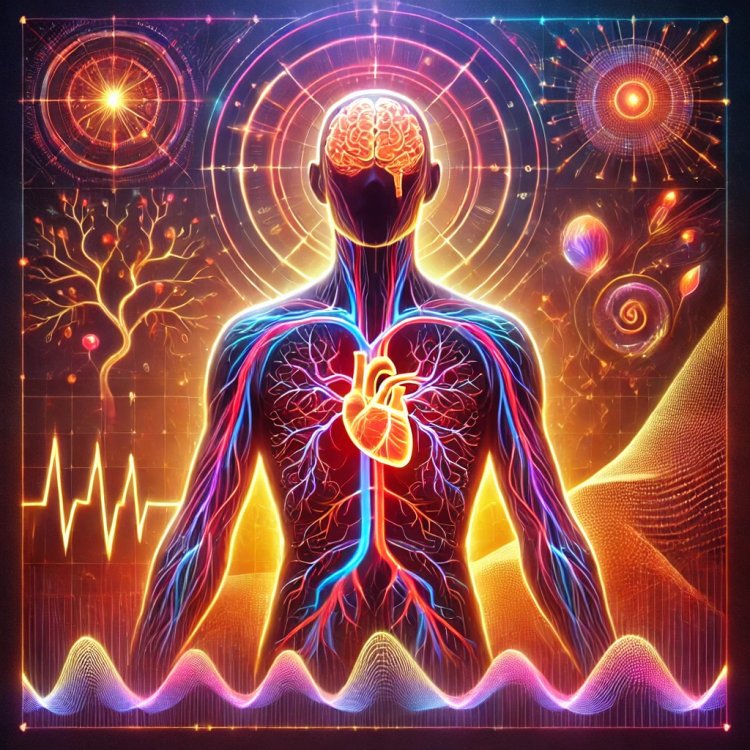The Science of Arousal: How the Human Body Responds to Pleasure
Explore the science behind arousal and how the human body responds to pleasure. Understand the physical, emotional, and neurological processes involved in sexual arousal and pleasure.

The Science of Arousal: How the Human Body Responds to Pleasure
Introduction
Arousal is a complex physiological and psychological response that involves the brain, body, and emotions. Understanding how the human body responds to pleasure can help us explore the intricate processes behind sexual attraction, desire, and satisfaction. In this article, we’ll dive into the science of arousal, looking at the physical, emotional, and neurological factors that play a role in how our bodies respond to pleasure.
What is Arousal?
Definition: Arousal refers to the body's heightened state of alertness and readiness for sexual activity. It is often triggered by external stimuli, such as physical touch, visual cues, or emotional connection, but it can also stem from internal psychological factors like desire and fantasy.
When a person becomes aroused, both physical and psychological responses occur, involving the nervous system, hormones, and various organs in the body. These responses vary from person to person, but the underlying mechanisms are similar across genders and orientations.
The Neurological Response: Brain's Role in Arousal
The Impact of the Brain: The brain plays a central role in the process of arousal. It processes external stimuli, such as visual or tactile sensations, and interprets them as pleasurable or stimulating. The limbic system, often referred to as the "emotional brain," is primarily responsible for processing emotions and sexual feelings.
The hypothalamus, a part of the brain that controls hormone production, signals the body to release hormones like dopamine and oxytocin, which are associated with pleasure and bonding. This flood of chemicals creates the sensation of sexual pleasure, enhancing arousal and emotional connection during intimate moments.
Physical Responses: What Happens to the Body?
Autonomic Nervous System Activation: When arousal begins, the body’s autonomic nervous system kicks into action. This system controls involuntary bodily functions and is divided into two parts: the sympathetic and parasympathetic nervous systems.
The sympathetic nervous system is responsible for the "fight or flight" response, but it also plays a role in sexual arousal. When activated, it increases heart rate, blood pressure, and respiration rate, and redirects blood flow to the genitals, causing them to become more sensitive and engorged. For people with male physiology, this results in an erection, while for those with female physiology, it causes vaginal lubrication and clitoral sensitivity.
The parasympathetic nervous system works to relax the body once sexual activity has been initiated, helping to sustain arousal and allowing the body to experience the pleasurable sensations that come with sexual engagement.
The Hormonal Influence: Chemicals of Pleasure
Role of Hormones: Hormones play a key role in regulating arousal and sexual desire. The brain releases various chemicals that influence the body's sexual response. These include:
- Dopamine: Known as the "pleasure chemical," dopamine is released during pleasurable experiences, including sexual arousal. It motivates behavior and helps reinforce the enjoyment of the experience.
- Oxytocin: Often called the "love hormone," oxytocin is released during moments of bonding and intimacy. It enhances the feeling of closeness and emotional attachment with a partner during sexual activity.
- Testosterone: This hormone is critical for sexual desire in both men and women, though it is present in higher levels in men. Testosterone influences libido and plays a role in the physical aspects of sexual arousal.
- Estrogen: In individuals assigned female at birth, estrogen helps regulate the menstrual cycle and is also involved in the sexual response by increasing sensitivity in the genital area.
Psychological Factors: Desire and Fantasy
Emotional and Cognitive Influences: Arousal is not only a physical response; it is deeply influenced by psychological factors such as desire, anticipation, and fantasy. The brain’s ability to fantasize and create mental images can be as powerful as physical stimuli in triggering arousal.
Emotional connection and intimacy with a partner can also enhance arousal, as feelings of safety, trust, and attraction deepen the experience of pleasure. Stress, anxiety, or negative body image, on the other hand, can inhibit arousal, making it harder for individuals to experience pleasure.
Why Understanding Arousal is Important
The Benefits: Understanding the science of arousal can lead to improved sexual health and communication in relationships. When individuals recognize how their bodies respond to pleasure, they can better communicate their desires and needs with their partner. This can lead to a more fulfilling and satisfying sexual relationship.
Additionally, understanding the different factors that contribute to arousal — including physical, psychological, and emotional components — can help address issues such as low libido or sexual dysfunction. For those experiencing challenges with arousal, seeking professional help from a therapist or healthcare provider can be an important step toward improving sexual health.
Conclusion
Arousal is a complex and multifaceted process involving the brain, body, and emotions. By understanding the science behind arousal and the various factors that influence sexual pleasure, individuals can better appreciate the intricacies of human sexuality. Recognizing the interplay between neurological, hormonal, and psychological responses can foster healthier sexual relationships and contribute to overall well-being and satisfaction.
© 2025 Anymovies , All Right Reserved
What's Your Reaction?















